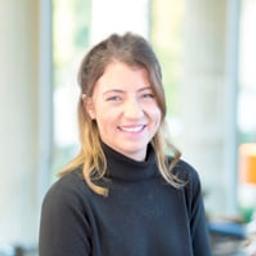Latest Human Cell Atlas related research demonstrates power of <i>in situ</i> sequencing technology for cell typing
SciLifeLab and UCL team use in situ sequencing to produce first spatial map of closely related brain tissue cells
20 Nov 2019
In a paper published in Nature Methods, researchers from Mats Nilsson’s team in SciLifeLab & Stockholm University show how they developed a new technique based on In Situ Sequencing (ISS) which identifies both cell types and their spatial location. This technique is also utilized in CARTANA’s range of products and services and can identify cell types as well as determine their spatial location in a much more efficient way than previous methods.
The global "Human Cell Atlas" project has now reached the stage where it is possible to catalogue virtually all human cell types based on their molecular content rather than by microscopy. However, the researchers involved realised that in order to understand how different tissues function, there is a need to create maps of the spatial organisation of the different tissue cell types.
In a recent study, led by Mats Nilsson and described in the Nature Methods paper entitled Probabilistic cell typing enables fine mapping of closely related cell types in situ, researchers from SciLifeLab, Sweden and UCL, UK presented an effective way to deal with the problem using ISS to map individual nerve cells in the mouse cerebral cortex. The map is the most high-resolution and detailed spatial map of nerve cells in the mouse cerebral cortex produced so far.
“Considerable resources are being invested in cataloguing and mapping human organs in the Human Cell Atlas project because information on the molecular content of our different cell types will result in greater understanding of the differences between healthy and diseased tissue at the cellular and molecular level. Armed with that knowledge, it should be easier to find effective therapies against diseases such as cancer. Our technique could help speed up this process,” explains Xiaoyan Qian, lead author of the paper.
Professor Mats Nilsson, co-founder of CARTANA, adds, “By producing precise information on which cells differ in diseased tissue, and in what way, we can improve our understanding of how diseases arise in the brain, in the immune system and in cancer. This will help in the search for effective therapies. While we demonstrated the technique on neurons in mouse brain, it also has a wider range of other potential applications in immunology and oncology, including studying stem cell development and tumor microenvironment.”
Malte Kühnemund, co-founder and CEO of CARTANA, adds, “Our new ISS technique is now commercially available. Customers can prepare their own samples using our customizable ISS library prep kits and then forward the prepared samples to in situ sequencing Core facilities for sequencing and data analysis, or just send the tissue slide to us at CARTANA and we will take care of the entire process of sample preparation and sequencing.“
